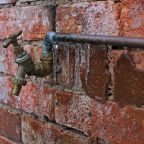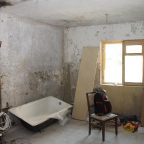
Breaking Down the Different Types of Chimneys: A Comprehensive Guide
Are you looking to learn more about the different types of chimneys? Look no further!
This comprehensive guide will break down all the chimney varieties out there. Enhancing your knowledge of chimney types, you can better understand what is best for your home and ensure its safety.
So, let's dive in and unlock the world of chimneys!
Masonry Chimneys
Masonry chimneys are one of the oldest types of chimney structures. They are made of bricks, concrete blocks, or stones and can be found in many traditional homes. These chimneys channel smoke from a fireplace or furnace to the outside.
When choosing this type of chimney construction, it is essential to ensure it is built correctly. This is because any structural flaws can lead to safety hazards. Masonry chimneys also require regular maintenance and repairs due to wear and tear. It's crucial to have masonry chimneys inspected and maintained by professionals to prevent potential hazards like chimney fires or carbon monoxide leaks.
Metal (Prefab or Factory-Built) Chimneys
Metal chimneys, or prefab or factory-built chimney varieties, are made of metal pipes and are often found in modern homes. They can be easily installed and do not require any additional structural support.
One benefit of metal chimneys is that they have better insulation than masonry chimneys, making them more energy-efficient. However, they may not be suitable for all types of fuel and may require regular inspections to ensure they are in good condition.
Double-Walled Metal Chimneys
A variation of metal chimneys is the double-walled metal chimney. These chimneys have an inner and outer layer, with insulation in between, providing extra protection against heat transfer. They are commonly used for wood-burning stoves and fireplaces.
Double-walled metal chimneys also have a sleeker design compared to traditional masonry chimneys, making them a popular choice for modern homes. However, they can be more expensive and may need professional installation.
Prefabricated Masonry Chimneys
Prefabricated masonry chimneys are a combination of both metal and masonry chimneys. These chimneys have a metal interior but are covered with brick or stone on the outside, giving them the appearance of a traditional chimney.
One benefit of prefabricated masonry chimneys is that they are more durable and less prone to leaks than traditional ones. They also offer a rustic look that can enhance the aesthetic appeal of a home. Primarily, they are designed for gas or electric fireplaces.
Direct Vent Chimneys
Direct vent chimneys are metal chimneys that do not require a traditional chimney structure. Instead, they have a direct vent pipe that goes through an exterior wall and can be used with different fuel types.
These chimneys are often used for gas or propane fireplaces and do not require any on-site construction. They also have a sealed design, making them more energy-efficient and reducing the risk of carbon monoxide leaks.
Vent-Free or Ventless Chimneys
Vent-free or ventless chimneys do not have a chimney structure at all. Instead, they use a gas-powered burner that releases heat and exhaust into the room. While they are easy to install and cost-effective, they can pose health hazards if not correctly used.
Before choosing this type of chimney, it is crucial to check local building codes as they may not be allowed in certain areas. Adequate ventilation is also essential to prevent the buildup of carbon monoxide and other harmful gases. This type of chimney is mainly used for gas fireplaces or wall heaters.
Top Vent Chimneys
Top vent or conventional chimneys have a vertical pipe that goes through the roof. They are commonly used for wood-burning stoves and fireplaces and require a traditional chimney structure.
One advantage of top vent chimneys is that they have better draft control than other chimneys. However, they may need regular cleaning and maintenance to prevent creosote buildup and potential chimney fires. But you don't need to worry, as chimney sweeping services are available to help with this task.
B-Vent or Natural Draft Chimneys
B-vent or natural draft chimneys are similar to top vent chimneys, mainly because they use natural drafts instead of mechanical fans to expel fumes. They are often used for gas fireplaces and furnaces.
While these chimneys are typically more affordable, they may not be suitable for all fuel types and can be less efficient regarding heat output. Regular inspections are also necessary to ensure proper functioning. B-Vent chimneys can offer more controlled and consistent venting than natural draft chimneys, which can be affected by various environmental conditions.
Pellet Stove Venting Systems
Pellet stove venting systems are a newer type of chimney that is used with pellet stoves. They use a small-diameter pipe that can be installed horizontally, making them suitable for homes without traditional chimneys.
One advantage of pellet stove venting systems is their high efficiency and produce minimal emissions. However, they may require more maintenance compared to other chimneys. Also, the pellets can be more expensive than other fuel types.
Chimney Caps and Crowns
No matter which type of chimney you choose, it is essential to have a chimney cap and crown installed. A chimney cap helps prevent debris, animals, and rain from entering the chimney. The crown protects the top of the structure from water damage.
Chimney caps are usually made of stainless steel, copper, or other durable materials. They come in various designs to fit different chimney sizes and shapes. Choosing the right cap and crown can enhance your chimney's functionality and lifespan.
Regular inspections and maintenance of these components are necessary to ensure their condition.
Understand the Different Types of Chimneys
By understanding the different types of chimneys and their features, you can decide which type is best for your home. Remember always to follow safety protocols and have regular inspections and maintenance to keep your chimney in shape.
Don't hesitate to consult a professional with any doubts or concerns. With the right knowledge, you can unlock the world of chimneys and have a safer home for you and your family. So go ahead and dive into this comprehensive guide to chimney types!
If you wish to read more besides this chimney types breakdown, visit our blog. We've got more!













